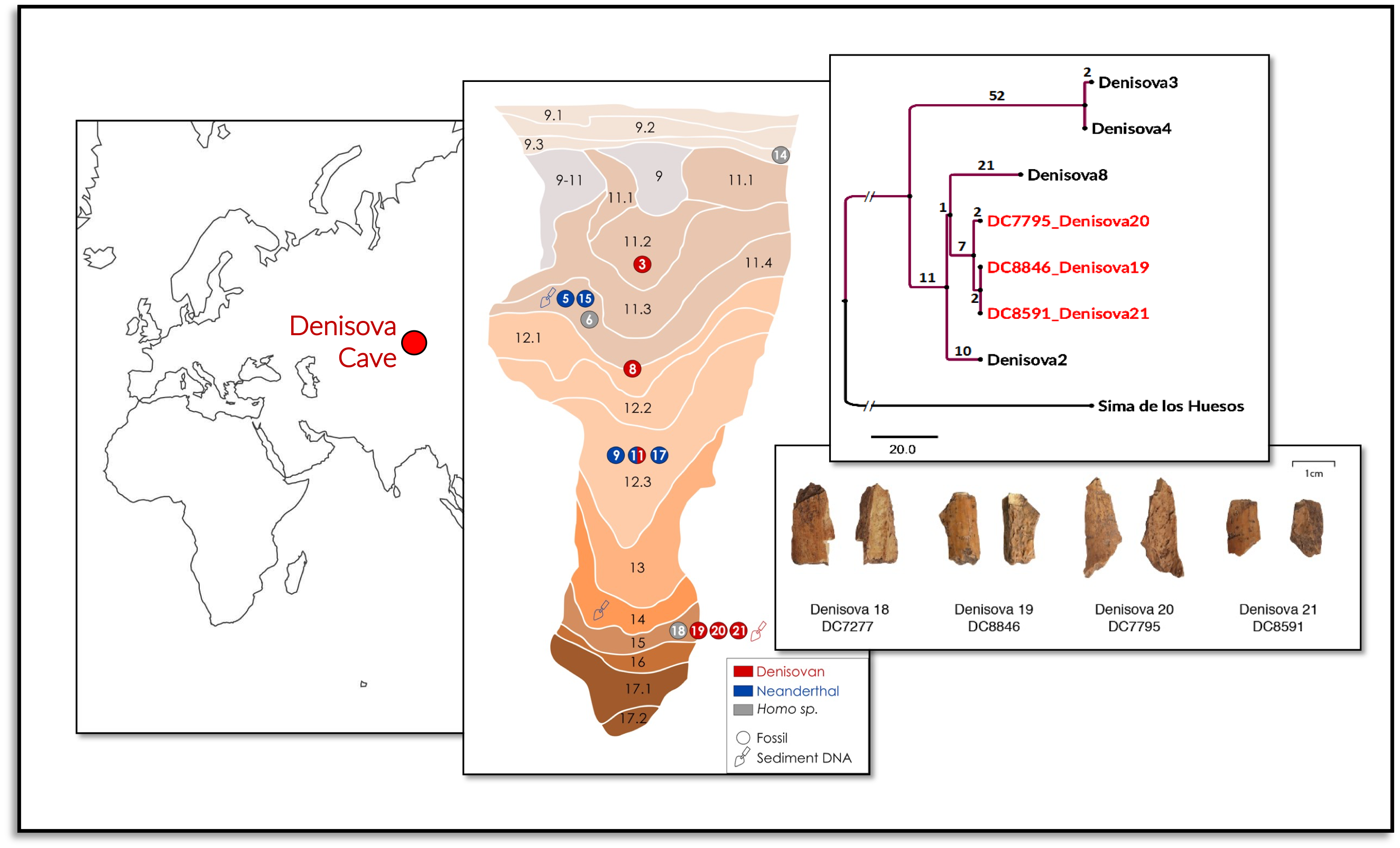
Ancient DNA at Yale University
We investigate the evolutionary history of modern and extinct human populations using ancient DNA.
Our focus is to retrieve and sequence DNA from archaeological materials to study the peopling of the world, the history of human health and their adaptation to different environments and lifestyle conditions.
Research

Peopling of the World
We generate genome wide data from ancient bones and sediments in different locations that have been inhabited by humans throughout history and link different ancient human lineages to specific temporal and geographic locations and environments.
The goal is to uncover genealogical relationships, migration routes, diversification events and genetic admixtures that shaped present-day human diversity.
We are combining DNA data from archaeological bones and sediments to generate high resolution time series ancient genetic data from different point through time in space with a particular focus on under-sampled regions of the world such as East Eurasia or Africa.
Adaptation
Modern human successfully spread across the world and colonized tropical to arctic, high to low altitudes environments and adapted to different lifestyles.
This success relied on new mutations, standing genetic variations, or introgressed variations through admixture between different human groups including archaic Neanderthals and Denisovans.
We use ancient DNA from archaeological bones and sediments to investigate the origin of genetic variants targeted by selection and their association with adaptations to lifestyles and environments.
Our goal is to link presence, absence and frequencies changes of specific allele to specific events in historic and prehistoric time and uncover details about the history of human health and the origins and evolution of several adaptative traits.


Adaptation
Modern human successfully spread across the world and colonized tropical to arctic, high to low altitudes environments and adapted to different lifestyles.
This success relied on new mutations, standing genetic variations, or introgressed variations through admixture between different human groups including archaic Neanderthals and Denisovans.
We use ancient DNA from archaeological bones and sediments to investigate the origin of genetic variants targeted by selection and their association with adaptations to lifestyles and environments.
Our goal is to link presence, absence and frequencies changes of specific allele to specific events in historic and prehistoric time and uncover details about the history of human health and the origins and evolution of several adaptative traits.

Methods for Ancient DNA
Past organisms left traces of their DNA in their environment which can be preserved from hundred thousand of years in sediments, independent of their physical remains.
The use of archaeological sediment as source of ancient DNA allows to generate genetic data of human and other organisms at sites and in regions where bone remains are not found, are rare, or cannot be accessed.
Our goal is to develop state of the art genetic and genomic approaches to better understand the factors that impact DNA preservation in different type of archaeological material (with a particular emphasis on sediment) and expand the use of sediment DNA for palaeogenetic research.
Publications
Team

Diyendo Massilani
Assistant Professor of Genetics
Principal Investigator
My passion for evolutionary genetics started during my teenage years. I obtained degrees in universities in Gabon and France and conducted postdoctoral research in Germany. Today, I combine my research skills in ancient DNA to investigate the history of humankind through genomes evolution.

Michael J. Boyle
Postdoctoral Researcher
starting April 2023

Shahar Silverman
Graduate student
I earned my Bachelor’s degree in Biology from the Hebrew University of Jerusalem. Before coming to Yale, I conducted research on bacterial defense mechanisms and the microbiome. My research interests are centered around the study of how microorganisms interact with their hosts and evolution. I am excited to learn about ancient DNA research and to apply my background in Microbiology to this field.
Values
The Massilani Lab ought to represent the cultural blend of our society.
My mentorship philosophy is to build a cordial, open and trusting work environment where people can freely express their authentic self and opinions.
As a scientist, I believe that the freedom to be our authentic selves, brings depth and meaning to our interactions and fosters a shared investment and commitment that will benefit our science tremendously.
I want to build an inclusive team where every member feels responsible for maintaining a safe and equitable work environment for all.
As a mentor, I will provide to my lab member the support they need to have an equitable access to opportunities regardless of their background, their ethnicity, country of origin, physical and mental abilities, gender, and sexual orientation.
My goal is to foster intellectual and personal freedom as a mean to promote talent, creativity, and growth.
Contact
+1 (203) 785 3767
post address:
Massilani Lab
Yale Genetics
PO BOX 208 005
New Haven, CT 06520 8005
address:
Diyendo Massilani
Sterling Hall of Medicine
I-234c
New Haven, CT 06510, USA






